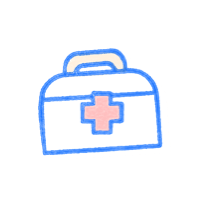EMT Patient Assessment Scenarios
As an emergency medical technician (EMT), your ability to accurately and efficiently assess patients is paramount to providing timely and effective care. Patient assessment scenarios are invaluable in preparing you to transition from school to real-life situations, helping you prepare for the unpredictable nature of emergency medical situations.
Emergency calls vary dramatically every day, from pleas for assistance with a seizure to calls about a potential drug overdose. As an EMT, you must be able to determine the best course of action quickly. In this blog, we’ll discuss a few patient assessment scenarios to help you practice for real-life emergencies.
The Importance of EMT Practice Scenarios
Practice scenarios serve as simulated real-life situations that allow EMTs to sharpen their assessment skills in a controlled environment. Real-life situations demand speed and efficiency to ensure the patient receives the best care possible, and these situations prepare you for that.
In practicing through these scenarios, you can apply your theoretical knowledge, enhance your critical thinking skills, and refine your decision-making process. Many practice scenarios reflect common real-life situations, giving you the opportunity to determine how you’d handle the situation without the pressure of an actual situation.
By repeatedly exposing yourself to diverse scenarios, you can develop confidence and competence in managing a wide range of medical emergencies. Moreover, these scenarios facilitate team collaboration and communication, essential elements in delivering seamless patient care.
3 EMT Patient Assessment Practice Scenarios
The unpredictability of real life is tricky to replicate, but the following practice scenarios offer a glance into common situations EMTs respond to. In each scenario, review the provided information and determine the appropriate EMT primary assessment steps. Remember to consider patient prioritization in each EMT assessment scenario.
Practice Scenario 1: Respiratory Arrest
You’re called to a local residence for a woman experiencing respiratory distress. Upon arrival, you find the woman lying in bed, appearing to struggle to breathe. The family reports she has had a high fever and difficulty breathing for the past few days. The scene is safe.
| General impression | 24-year-old woman in bed |
| Consciousness level | Unresponsive |
| Chief complaint | Difficulty breathing |
| Airway | Open |
| Breathing | Agonal |
| Circulation | Carotid pulse |
| Skin color, temperature, and condition | Pale and cyanotic |
| SAMPLE history | S- Pale and cyanotic A- Augmentin M- None P- None L- 2 days ago E- Lying in bed |
| Baseline vitals | Blood pressure – 100/60 mmHg Pulse – 104 beats/minute Respirations – 0 breaths/minute |
This is a high-priority patient. Treatment should involve positive-pressure ventilation, continuous pulse monitoring, and preparation to begin chest compressions if necessary.
Practice Scenario 2: Seizure
You’re called to a local residence for a patient currently having a seizure. Upon arrival, you find a male in his mid-20s lying on the floor, awake but clearly disoriented. The patient’s family reports noting the oncoming seizure and lowering the patient to the floor. They report the seizure lasted approximately two minutes before he “went to sleep.” The scene is safe.
| General impression | 25-year-old male lying on the floor |
| Consciousness level | Awake but disoriented |
| Chief complaint | Seizure |
| Airway | Currently patent |
| Breathing | Adequate |
| Circulation | Present and rapid pulse |
| Skin color, temperature, and condition | Pale, warm, and dry |
| SAMPLE history | S – ALOC A -None M – Tegratol, not usually compliant P – Seizures L – Ate breakfast, skipped lunch E – Unknown |
| Baseline vitals | Blood pressure – 132/98 mmHg Pulse – 132 beats/minute Respirations – 22 breaths/minute |
This is a high-priority patient. Treatment should involve administering oxygen, obtaining a full set of vital signs, and verbally communicating the need for close monitoring for seizure activity.
Practice Scenario 3: Foreign Body Airway Obstruction
You’re called to a local restaurant for a woman who appears to be choking. Upon arrival, you find a 40-year-old woman lying on the floor, surrounded by bystanders who are attempting to dislodge the object. The scene is safe.
| General impression | 40-year-old woman on the floor |
| Consciousness level | Unresponsive |
| Chief complaint | Unable to breathe |
| Airway | Obstructed by food |
| Breathing | Apneic |
| Circulation | Carotid pulse |
| Skin color, temperature, and condition | Pale and cyanotic |
| SAMPLE history | S – Pale and cyanotic A – Penicillin M – Pravachol P – Hypercholesterolemia L – Eating dinner E – Sitting in a chair |
| Baseline vitals | Blood pressure – 100/60 mmHg Pulse – 88 beats/minute Respirations – 0 breaths/minute |
The treatment may involve CPR, the insertion of an oropharyngeal or nasopharyngeal airway, and using a bag-mask device for ventilation. Compressions should continue until the object is dislodged.
Test Your Skills With Pocket Prep
Mastering patient assessment scenarios is essential for any EMT to deliver high-quality care in an emergency situation. Through deliberate practice and exposure to a diverse range of scenarios, you can begin honing your skills and preparing for real-life scenarios.
If you’re ready to test your skills, from general EMS operations to trauma responses, our NREMT EMT Exam Prep can help. It covers five major categories, preparing you for the questions you’ll encounter on your test. Hone your skills with six quiz types, including Weakest Subject quizzes and Mock Exams. Start testing your knowledge and skills today!

